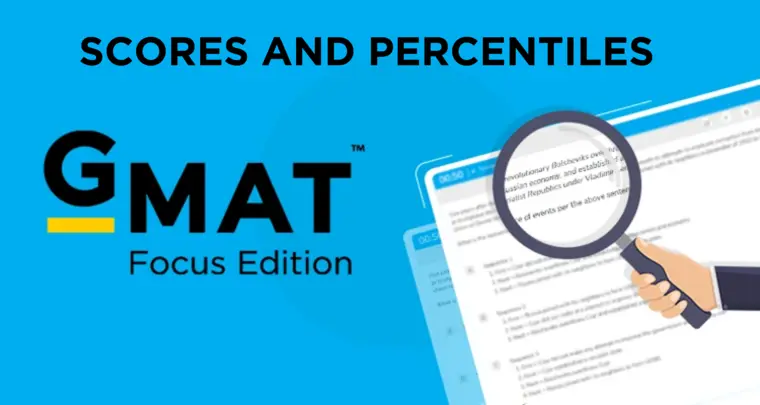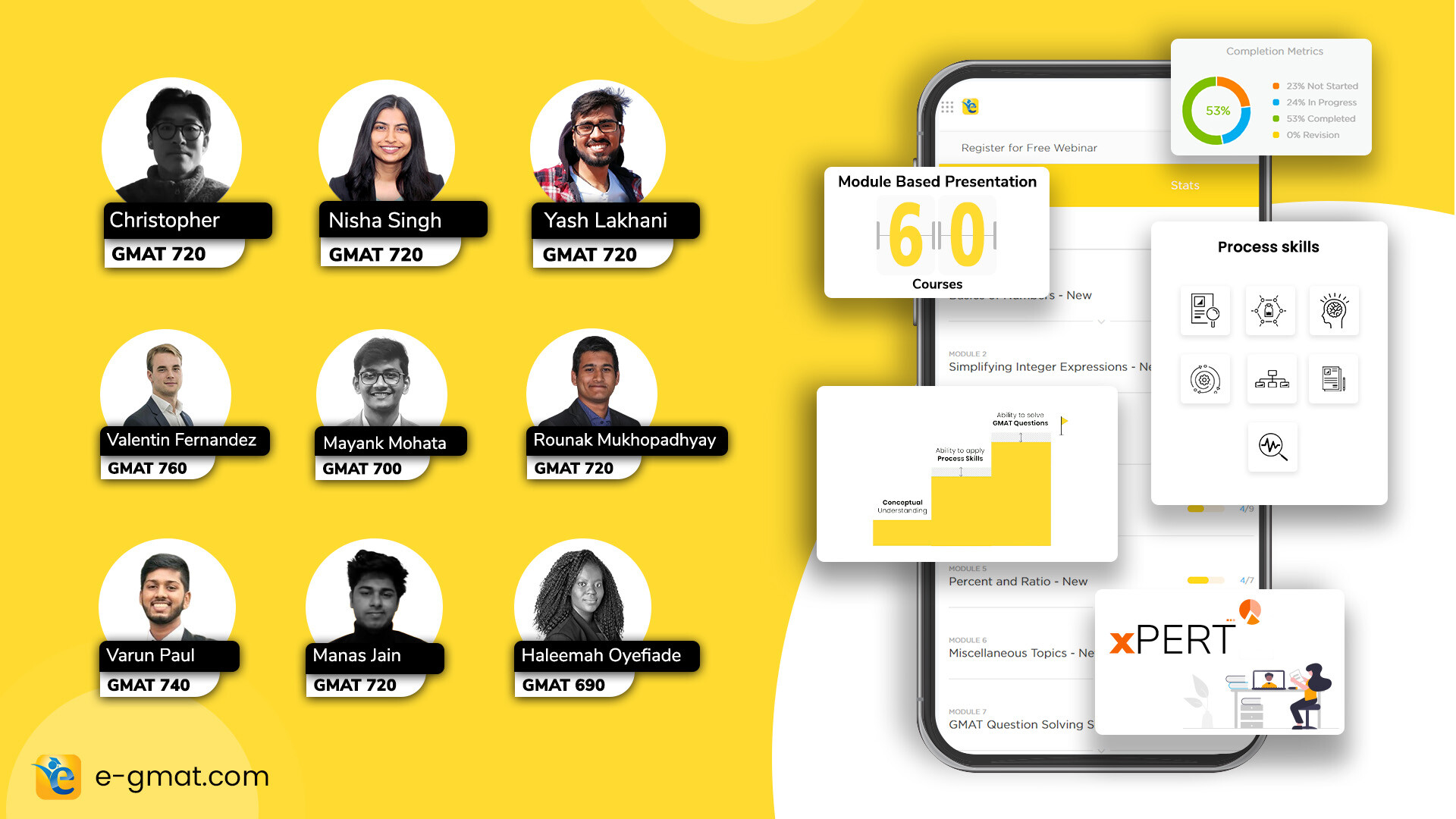Introduction
Probability is one of the most feared topics on the quant section. And now with the inclusion of Data Insights as part of your score out of 805, these questions make frequent appearances on the Data Insights section as well.
So, to target 90%ile or higher in Quant and Data Insights, you need to be very confident with these questions.
In this article, we have collated 5 difficult TPA questions from Official Guides that test the concept of probability. We have provided detailed video solutions that demonstrate how you should be approaching such questions. Let us master Probability in TPA Questions.
How to navigate this article
To make the most of this article, be sure to completely understand probability concepts and build your skills to solve difficult probability questions to such a degree that you achieve > 70% accuracy in hard questions in this topic.
And then come and try your hand at these official TPA questions. So, here is the most optimum way of extracting the most from this article.
- Achieve > 70% accuracy in Probability hard PS questions.
- Understand the format of TPA questions.
- Solve official TPA questions in this article and cement probability skillset in TPA as well. As you solve each question, watch the attached video solution and fill your error log based on the faltering point guidance provided in the article. Dive in to unlock the expertise to solve Probability in TPA Questions.
So, let’s get started!
Probability TPA question 1
Solve this question:
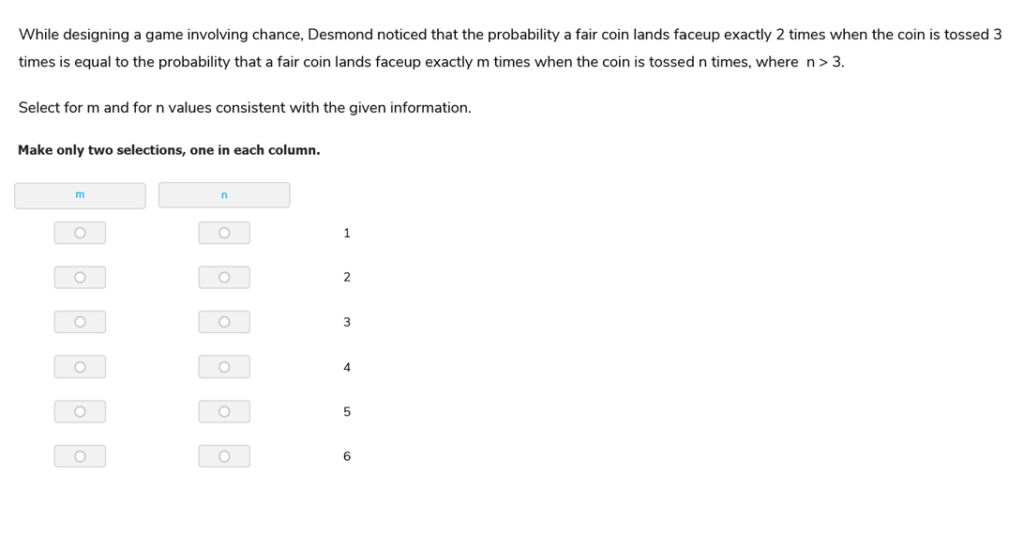
Attributes of this question:
This is your typical Quant Problem Solving question in the garb of a TPA question. The dataset is fairly concise. There are indeed variables that do increase the complexity of the question.
Accuracy: 35% in 3’40”
Faltering Point Analysis
And now watch the video solution. As you watch the ‘owning the dataset’ approach demonstrated in the video, actively think about why you made a mistake in this question or where you got stuck in this question. Here are some likely points:
- Were you able to formulate the expressions of probability correctly?
- If not, then the issue is lack of comprehension of the dataset.
- Corrective Action: Translation while reading and drawing inferences about the scene expressed about probability.
- Did you get scared of these variables m and b here?
- If yes, then you have a mental block about variables.
- Corrective Action: Have faith in yourself. Do not rush.
- Did you miss accounting for the order in which the ups and downs appear?
- If yes, then you have some gaps in your understanding of probability concepts.
- Corrective Action: Build your conceptual understanding of probability.
- Did you understand how process the choices with variables in combination formula?
- If no, then there are some gaps in drawing inferences.
- Corrective Action: Build your inference process skills especially with concepts pertaining to Number Properties.
Probability TPA Question 2
Solve this question:
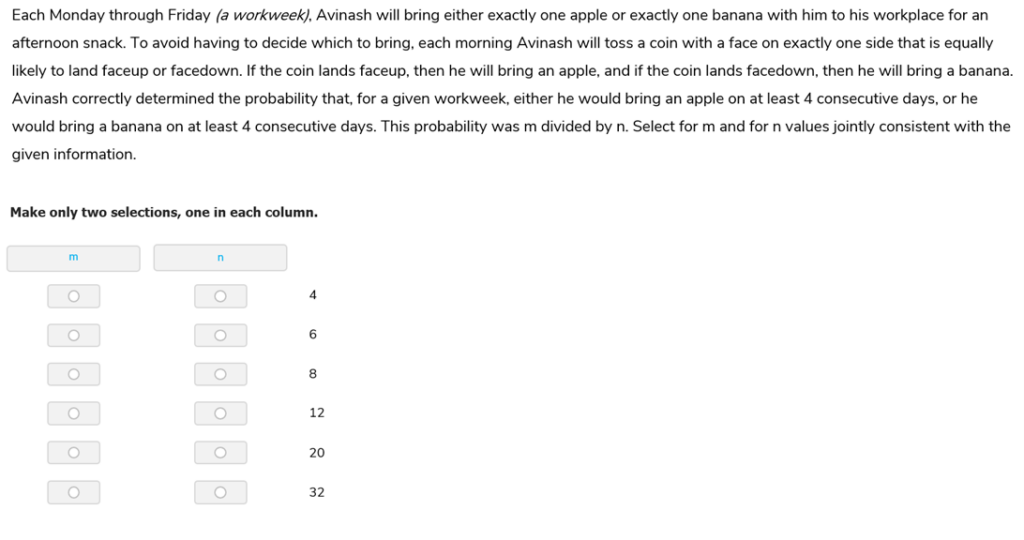
Attributes of this question:
Similar to the previous question, this is your typical Quant Problem Solving question in the garb of a TPA question. The dataset is a bit more detailed in this one.
Accuracy: 36% in 2’45”
Faltering Point Analysis
And now watch the video solution. As you watch the ‘owning the dataset’ approach demonstrated in the video, actively think about why you made a mistake in this question or where you got stuck in this question.
- Were you able to translate the scenario into probability equation?
- If not, then the issue is either your lack of conceptual understanding related to probability or your lack of comprehension of the dataset.
- Corrective Action: Build your probability conceptual understanding if probability conceptual understanding is the issue. Working on reading the dataset with the intent to ‘owning the dataset’, if it is the comprehension issue.
- Did you arrive at the equation that the required probability is the sum of the three probabilities as stated?
- If not, then you faltered because you did not “consider all cases”
- Corrective action: Slow down while reading the dataset so that you do not miss contextually significant terms such as “at least” 4 consecutive days.
- Did you consider the impact of the word “consecutive”?
- If not, then you did not understand the “constraint” established by the scenario.
- Corrective action: Slow down while reading the scenario and immerse yourself in the scenario. That always helps with ‘owning the dataset’.
As you improve your skills to answer such Probability in TPA Questions correctly, you will not only improve your DI ability but also your Quant ability!
Probability TPA question 3
Solve this question:
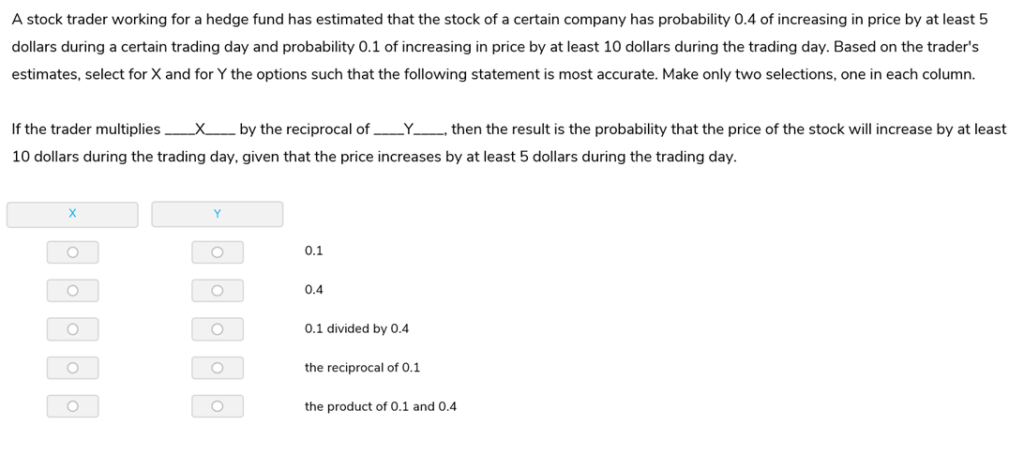
Attributes of this question:
This question has a pretty dense dataset and hence needs to be read slowly with the intent to ‘own the dataset’. Translating and visualizing the dataset is the key to solving this question correctly. In fact, once you get a handle of the dataset, you need to interpret the question statement and understand the scenario that the question statement is describing.
Accuracy: 47% in 2’30”
Faltering Point Analysis
And now watch the video solution. As you watch the ‘owning the dataset’ approach demonstrated in the video, actively think about why you made a mistake in this question or where you got stuck in this question.
- Were you able to understand the two probabilities – increase by at least 5 dollars vs. increase by at least 10 dollars?
- If not, then you did not comprehend the dataset.
- Corrective Action: Work on reading the dataset with the intent to ‘owning the dataset’.
- Were you able to visualize the scenario presented by the question statement – “given that the price increases by at least 5 points during the day”?
- If not, then you faltered because you could not visualize the scenario presented.
- Corrective action: Slow down while reading the question stem and visualize the scenario.
- Did you arrive at the probability as 0.1/0.4 but ended up selecting incorrect choices for X and Y?
- If yes, then you did not translate the question stem correctly.
- Corrective action: Before you finalize your answer selection, plug the answers selected in the blanks and make sure that they make sense with the answer you computed.
Summary
In this article, you saw how the concept of Probability in TPA Questions is tested. Along with solid conceptual understanding of probability, one needs to master the skill of ‘owning the dataset’.
The application of probability was not very complex in any of these questions. Yet these are difficult questions with accuracy less than 40% for most with more than 3.5’ solving time. Implement the following strategies to increase your accuracy and reduce the time to answer:
- Read the dataset slowly.
- Draw inferences as you read the dataset.
- Translate the question statement slowly.
- Arrive at a solid approach to solve the question before doing any processing.
- Do not get scared of variables.
Making mistakes at this point is good since each mistake gives you an opportunity to learn. But those opportunities will be lost if you do not do solid faltering point analysis and fill your error log the right way.
Questions for the students
What were your faltering points for each of these 3 questions? What steps will you take to not make such mistakes again?
Ready to tackle the GMAT Focus Edition? e-GMAT offers a Personalized Study Planner and top-notch Free GFE mock exam to help you prepare effectively. As the most reviewed GMAT prep company on GMAT Club with 2600+ reviews we’re here to support your GFE journey. Take advantage of our free trial with the best quality content. Start your path to success today!




